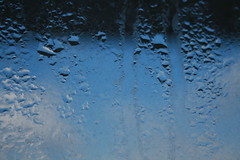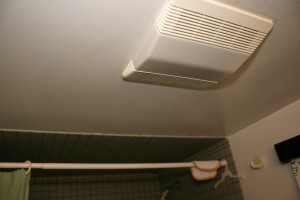“My name is Jeremy and I have a humidity problem.”
Solving moisture problems in the home can seem like a 12 step process. First, you need to need to admit there is a problem.
This time of year, many people are very willing to admit to the problem. Actually, a lot of people are calling out for help to fix the problem, afraid their homes are quickly turning into petri dishes.
The good news is that with a few simple inexpensive changes in your home and/or lifestyle you can sleep comfortably without fear of excess moisture in the air. The bad news is that its going to take a bit of thinking on your part, probably some minimal expense and a few small changes in how you do things at home.
Before spending lots of money on gizmos do the simple things:
- Find out where the moisture is coming from,
- Get rid of the moisture you know you’re creating,
- Find permanent solutions for other problem areas.
There are many places moisture might be coming from in your home, but we know two areas that always create lots of moisture: your bathroom and kitchen. Luckily the solutions there are simple – turn on your exhaust fans.
I cannot tell you how often I see “exhaust” fans that send moist air into the home rather than outside. Kitchen fans that suck greasy, smokey air and blow it into the cook’s face; bathroom fans that suck hot moist air from the shower and send it into the attic where it will grow mold on the wood and destroy the insulation. If either of these sound familiar, hire someone to fix it immediately. That air belongs outside your home.
Got it? Good. Let’s continue.
1. You know that thing in the ceiling of your bathroom that makes noise when you turn it on? It’s a bathroom exhaust fan. Use it. Turn it on BEFORE you get in the shower, leave it on while you get dressed, and turn it off about 15-20 minutes AFTER you’ve finished bathing. Afraid you won’t remember? Spend $10 on a timer switch and turn it on before you get in the bath. If you want to spend more money you can purchase a fan unit with a build-in humidity sensor.

I couldn’t find a good photo of a kitchen fan but in searching this image popped up. It’s good enough. Courtesy of Ben Dodson, some rights reserved.
2. Your kitchen has a fan also that vents to the outside. (It does vent to the outside, right? If it doesn’t, hire someone to do that ASAP.) Cooking food puts a LOT of moisture into your air, especially if you have a gas stove. Funny, but burning gas emits moisture. Ever heard of people’s chimneys falling apart due to water vapor? Bingo – burning fuel emits water. It also puts a variety of things you don’t want to be breathing into the air so turn on the fan when you cook.
The tighter your house, the more important it is to use these exhaust fans properly. By “properly” I means using them during and for some time after you’re active in that room (bathing or cooking.)
So what do you do if you’re seeing condensation on your windows after you’ve made these simple changes?
Get a hygrometer. I’ve come to prefer a hygrometer that allows two or three remote sensors so you can place one in the basement and other rooms in the house but monitor all from one location. Put it in your kitchen (or wherever you hang out most) and you can check it regularly to see what is happening where in the house, moisture-wise. However, resist the urge to put it on a window sill – you’ll think that room is frozen and underwater.
I’ve tried a number of hygrometers and found the Ambient Weather WS-0101 to be good. (See below for more recommended models.) Most inexpensive hygrometers are going to be off by a few percent – don’t worry too much unless you plan to monitor a humidor or ancient Greek texts.
Do NOT get the $5 analog hygrometers from the local hardware store – they’re less accurate than a broken clock.
Using the hygrometer you may find that in some cases the moisture is coming from your basement if, for example, you have a hole for a sump pump or leaky foundation walls. You may find that even after using an exhaust fan your bathroom is still too humid. Or you may find that every room in the house is staying between 30-50% relative humidity and moisture is condensing on the window because that is what happens when the coldest surface in that room meets warm air.
I’m going to try to update this with more information in the coming days but if you’ve got specific areas you’d like addressed, please leave a comment below, and I’ll try to hit it.
Other recommended hygrometers I like:
One model I dislike terribly: The La Crosse WS-9080U-IT This is one of the worst items I’ve ever purchased. Repeatedly failed to work, went through batteries fast, annoyingly difficult to program and more. Avoid this unit.



really good info here on your site didnt know about the moisture in the air when cooking and that you should always have the fan on will do from now on